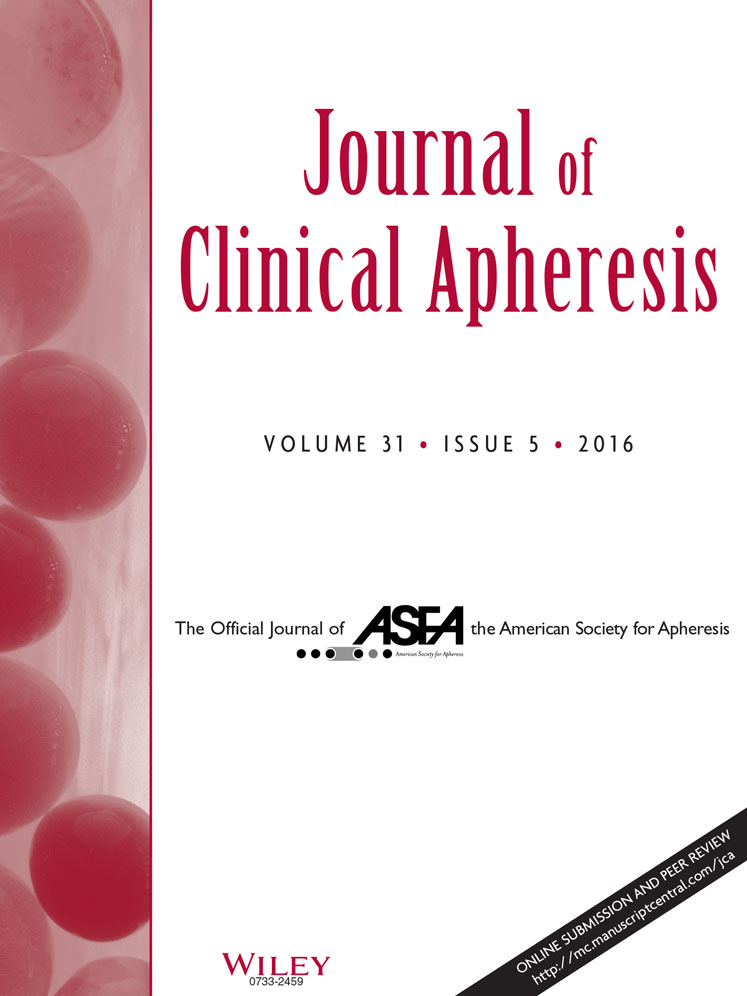Comparison of two leukocytapheresis protocols in a case of idiopathic hypereosinophilic syndrome
Abstract
Background
Hypereosinophilic syndrome (HEOS) is rare, and the efficacy of leukocytapheresis in this context is unclear. We here report the successful treatment of a patient with idiopathic HEOS with four leukocytapheresis procedures using two protocols.
Case
A 4-year-old female presented with cardiac and respiratory dysfunction, and WBC of 225 K/μL with 96% eosinophils. Leukocytapheresis was started after initiation of methylprednisolone and hydroxyurea. She received two leukocytapheresis with polymorphonuclear cell (PMN) protocol, followed by initiation of imatinib therapy, then two leukocytapheresis with mononuclear cell (MNC) protocol. After the fourth leukocytapheresis, her WBC decreased to 69 K/μL with 82% eosinophils. She was discharged on hospital day 21 under stable condition with WBC of 22 K/μL with 86% eosinophils. WBC count and eosinophil percentage continued to decrease, and were 6.4 K/μL and 52% by 2 weeks and 3.9 K/μL and 4.9% by 3 months after discharge, respectively.
Findings
WBC and absolute eosinophil (aEO) counts decreased by an average of 29.0 and 30.4% per leukocytapheresis, respectively. Normalized to estimated blood volume, procedures with PMN and MNC protocols changed, on average, WBC by −10.7 and −12.1%, aEO by −10.4 and −13.4%, platelet by −8.1 and −19.2%, and fluid balance by −129 and −47 mL, respectively.
Conclusion
Leukocytapheresis was effective in decreasing WBC and aEO counts in HEOS, with PMN and MNC protocols achieving similar reductions. However, PMN protocol resulted in greater negative fluid balance and MNC protocol resulted in greater platelet loss. J. Clin. Apheresis 31:481–489, 2016. © 2015 Wiley Periodicals, Inc.




